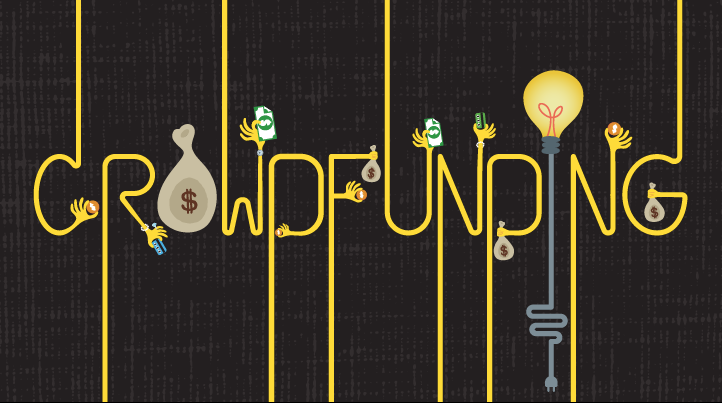There are a few equity crowdfunding misconceptions that can mislead and confuse those considering it as an option. In fact, equity crowdfunding can be an excellent way of raising money for a business. Yet, it isn’t a superb solution for every businesses, not least because of the common misconceptions that can include:
1. The crowd is all I need
If only! As well as sending out stories to generate PR and creating an awesome pitch, entrepreneurs need to make contacts, customers, friends and family aware of their campaign.
Ever noticed how no-one seems to like being the first to arrive at a party? Well, equity crowdfunding’s a bit like that. Investors who’ve never heard of your business might be impressed by your pitch, but many won’t part with their cash until you’ve reached a reasonable amount of your investment target. That’s because they want to see that you have a reasonable chance of reaching your target before they’ll invest in your campaign. This is perhaps the biggest of all equity crowdfunding misconceptions.
2. Capital is the only benefit from equity crowdfunding
Not entirely true. Although the prospect of raising money for a business is the main objective of crowdfunding, there are other benefits:
- Engaging with existing customers.
- Acquire new potential customers
- Creating evangelists who’ll spread the word about your brand.
- Gaining valuable feedback on how to develop the product/service.
- Hearing what new services/products customers would like you to offer.
3. Managing lots of small investors is time-consuming
Yes and no…. it depends on the platform you choose.
If the platform you choose doesn’t have a nominee structure, you could end up having lots of investors on your cap table, which can mean a lot of work, especially if you need consents at a later date.
However, if the platform does have a nominee structure such as the one Seedrs uses, the funded company only has one shareholder to deal with. So, there isn’t a large cap table to put off VCs further down the road.
4. Crowdfunding platforms don’t attract angels
Probably the craziest equity crowdfunding misconceptions of all. It’s just not so. On Seedrs, traditional angels, venture capitalists (VCs) and general members of the crowdfunding public are all welcome to co-invest – and they do. In fact, they look to the platform for access to deals that they may not have had access to. Angel investors are particularly welcome because they can provide more than funding, such as their expertise in taking a business to the next level, which can be invaluable to long-term success.
5. If I use a crowdfunding platform, I’ll put off VCs and institutional investors
If the capital that you raise is invested wisely, it could put your business in a stronger position if you decide to go for an institutional round at a later date. And, many VCs will see a successful crowdfunded round as a positive validation of your business.
In fact, many of the companies that raise on Seedrs have gone on to raise further rounds either exclusively with a VC or in tandem with the crowd again. For example:
- Landbay received investment from Zoopla
- Adludio from Passion Capital and Episode 1
- Perkbox raised alongside Draper Espirit.
But if you don’t have a clear structure in place (such as a nominee at Seedrs) to manage your shareholders, they might be more adverse to investing in your business.
6. Businesses crowdfund because they can’t raise capital from VCs or angels
Equity crowdfunding has a track record of funding serious, growth-focussed businesses. It’s not a last resort. It’s also now commonplace for VCs to diversify their portfolios by investing this way, for instance:
- Blow secured Unilever Ventures whilst raising on Seedrs.
- Maily had Faber Ventures co investing in their Seedrs round.
- Beeline’s crowdfunding co-investors were Seedcamp and TrueStart.
7. The crowd is ‘dumb money’
This is probably the most insulting of equity crowdfunding misconceptions. The crowd is a diverse and savvy bunch, just go onto the Q&A section of any campaign to see the discussions.
In fact, the top five investor professions on Seedrs are:
- Finance.
- Investment funds.
- Self-certified angel investors.
- Business founders.
- Legal professionals.
Many investors work in business daily and know how to value early-stage businesses and appreciate the risks involved with investing in this area.
8. Businesses looking to raise from the crowd are overvalued
It’s important to remember that a business’s valuation is very subjective. If anything, valuations on crowdfunding sites are more transparent, open and fair because it’s the crowd investors who decide whether the valuation seems accurate, and if the business is worth investing in.
A common reason for a campaign not hitting its target is because of a hyper-inflated valuation. As we’ve already established, the crowd are sophisticated, they know whether a business is trying to pull the wool over their eyes and if they don’t like what they see, they won’t invest.
9. Crowdfunding is an easy way to get investment
It’s not a case of creating a campaign, sitting back and watching the money flow in. It takes dedication, creativity, team engagement and time. At Seedrs, we aim to make the process quicker and more efficient than it is offline. But, it still takes work to get it right and to make the most of the opportunity.
Crowdfunding can be a brilliant way to get a business funded and turn dreams and targets into reality. But, it’s crucial that you see past the equity crowdfunding misconceptions and understand the realities of raising if your campaign is to be successful.
Chris Rea is the senior campaigns manager at Seedrs.
See also: Novel and useful – Why the two don’t go together in crowdfunding






